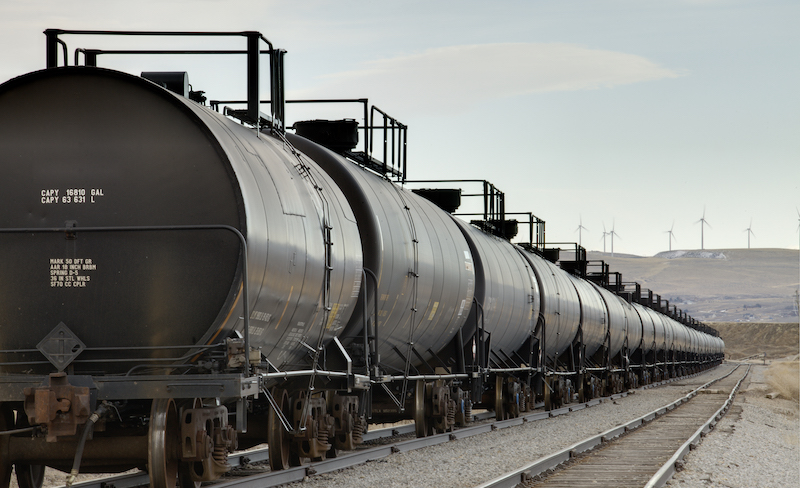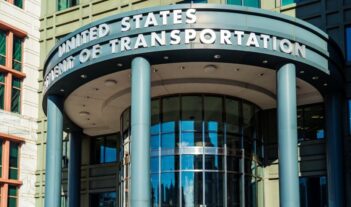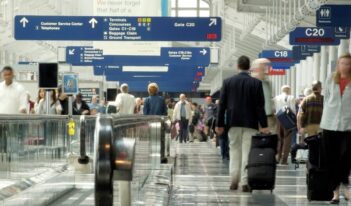
Experts say rescission of brake regulation could create serious safety risks.
In 2013, a runaway crude oil train derailed and exploded in the center of Lac-Megantic, Quebec, killing 47 people. Similar derailments of crude oil trains occurred in North Dakota in 2013 and Oregon in 2016.
Despite federal legislation demanding improved rail safety, safety experts charge that a recent policy change adopted by the Trump Administration will leave the public exposed to the dangers of rail accidents.
The U.S. Department of Transportation’s Pipeline and Hazardous Materials Safety Administration (PHMSA) last fall announced that it had rescinded a mandate on installing electronically controlled pneumatic brakes (ECP). After completing a study required by the Fixing America’s Surface Transportation Act (FAST Act) of 2015, PHMSA stated that “the expected costs of requiring ECP brakes would be significantly higher than the expected benefits of the requirement,” although railroads are still free to install ECP brakes should they wish.
Recent reporting by the Associated Press that PHMSA’s analysis underestimated the benefits of requiring ECP brakes has reinvigorated the debate over the Trump Administration’s rule rescission.
ECP brakes offer many benefits compared to traditional air brakes, according to a 2006 Federal Railroad Administration report. Air brakes require each freight car to brake “individually, at the speed of the air pressure moving from car to car, along trains that are often well over a mile in length.”
The ECP brake system, by contrast, allows engineers to apply brakes simultaneously on all train cars, allowing for quicker stops than with air brakes. ECP brakes also provide engineers with better control over their trains and lower risk of derailment or broken couplings between cars, according to the Federal Railroad Administration. Since less time is spent braking, engineers can operate trains at top speeds for longer, increasing fuel efficiency and decreasing emissions. ECP brakes can even self-diagnose for maintenance issues, allowing freight trains to make longer trips without stopping for brake inspections.
PHMSA released its analysis of the viability of mandating ECP brakes in 2017, and pointed to the Australian freight rail system as a useful comparison. Australia has widely adopted ECP brake systems on its freight railroads with positive results. A report from the Australian Department of Resources, Energy and Tourism—now part of the Department of Industry, Innovation and Science—notes fuel savings of 4 percent to 11 percent on trains with ECP brakes.
PHMSA’s analysis, however, identifies several obstacles to installing these brakes present in the United States, but not in Australia. In addition to lower projected benefits, PHMSA noted that freight cars in the United States are owned by shippers, not by the railroads. Furthermore, North American railroads are already engaged in the costly process of installing positive train control—an automated system for safely controlling train movement—across their systems.
The Australian report also highlights the costs of implementing an ECP brake system. Each tank car costs about $5,600 to retrofit, and the cars are out of service during this process.
To realize the full benefits of ECP brakes, the approximately 415,000 tank cars in service in the United States would require upgrades, and railroads would have to train their employees to use the new system. Hundreds of freight locomotives would require retrofitting as well.
According to PHMSA’s analysis, the costs of installing ECP brakes would outweigh the expected benefits. Over a 20-year period, PHMSA estimates the costs to range from $427.3 million to $554.8 million. PHMSA’s calculations for total benefits, however, range from $257.5 million to $374 million.
PHMSA also notes that crude oil movements by rail are difficult to forecast in the long run. North American railroads carried over 380 million barrels worth of crude oil in 2014, but by 2017 the volume was down to about 140 million barrels. PHMSA projects that crude oil traffic will rebound and eventually surpass 2014 levels, but even this optimistic forecast does not provide enough benefit to justify ECP brakes, the agency says.
In the wake of the Lac-Megantic incident, PHMSA authorized other specifications for tank cars in addition to ECP brakes, in accordance with the FAST Act. These regulations also established a schedule for retrofitting older cars to make them more fire-resistant. PHMSA now requires thermal protection systems on tank cars, along with metal jackets to protect these systems. PHMSA rules also specify weight limits and thickness of the car bodies.
Although mandatory ECP brakes for crude oil trains are off the table for the moment, PHMSA stated that its rescission of the rule “does not affect the ability of a railroad to implement ECP brakes” themselves. Railroads will still have to implement PHMSA’s other measures to improve safety on their trains, and the option of ECP brakes remains available if railroads wish to pursue it.



